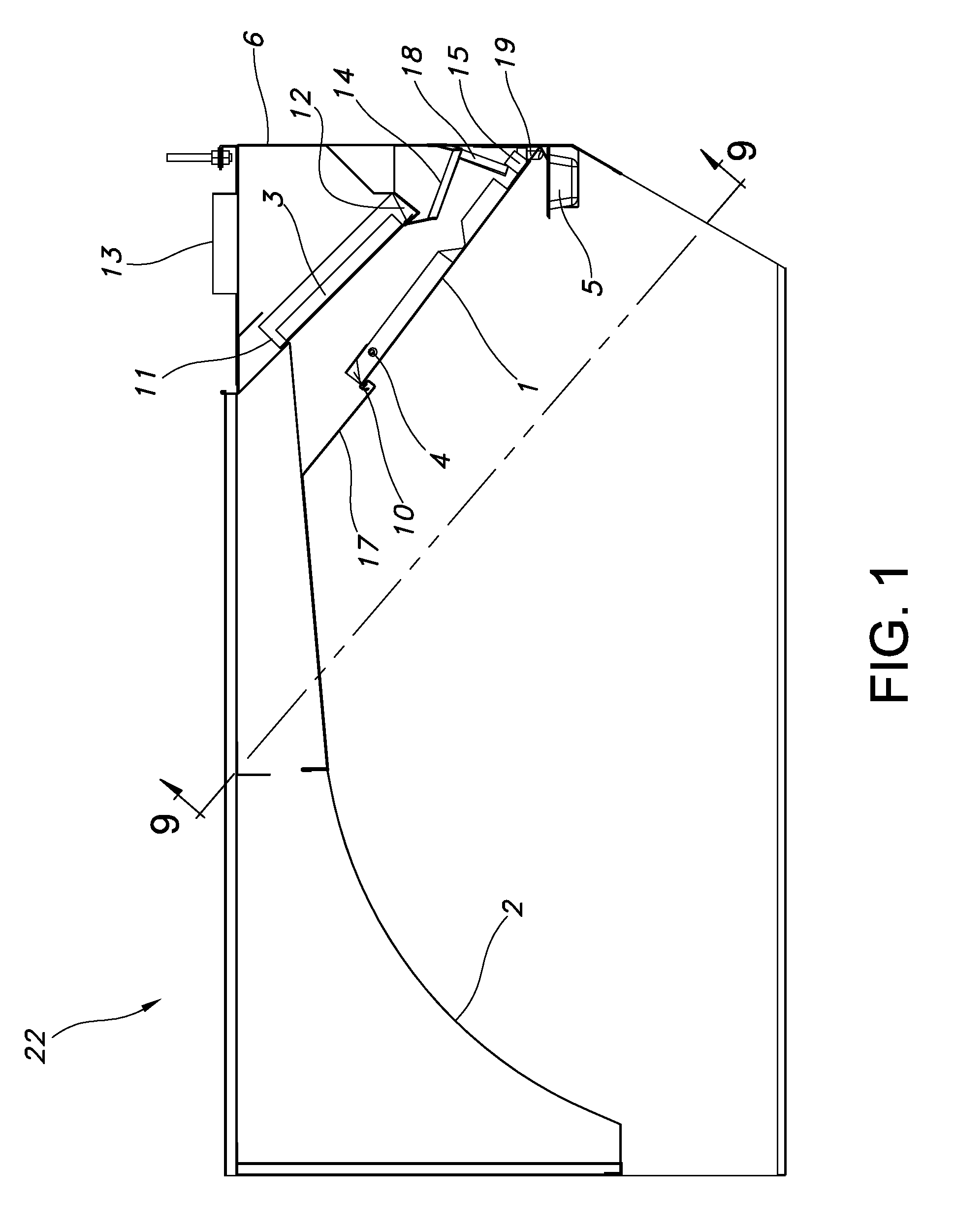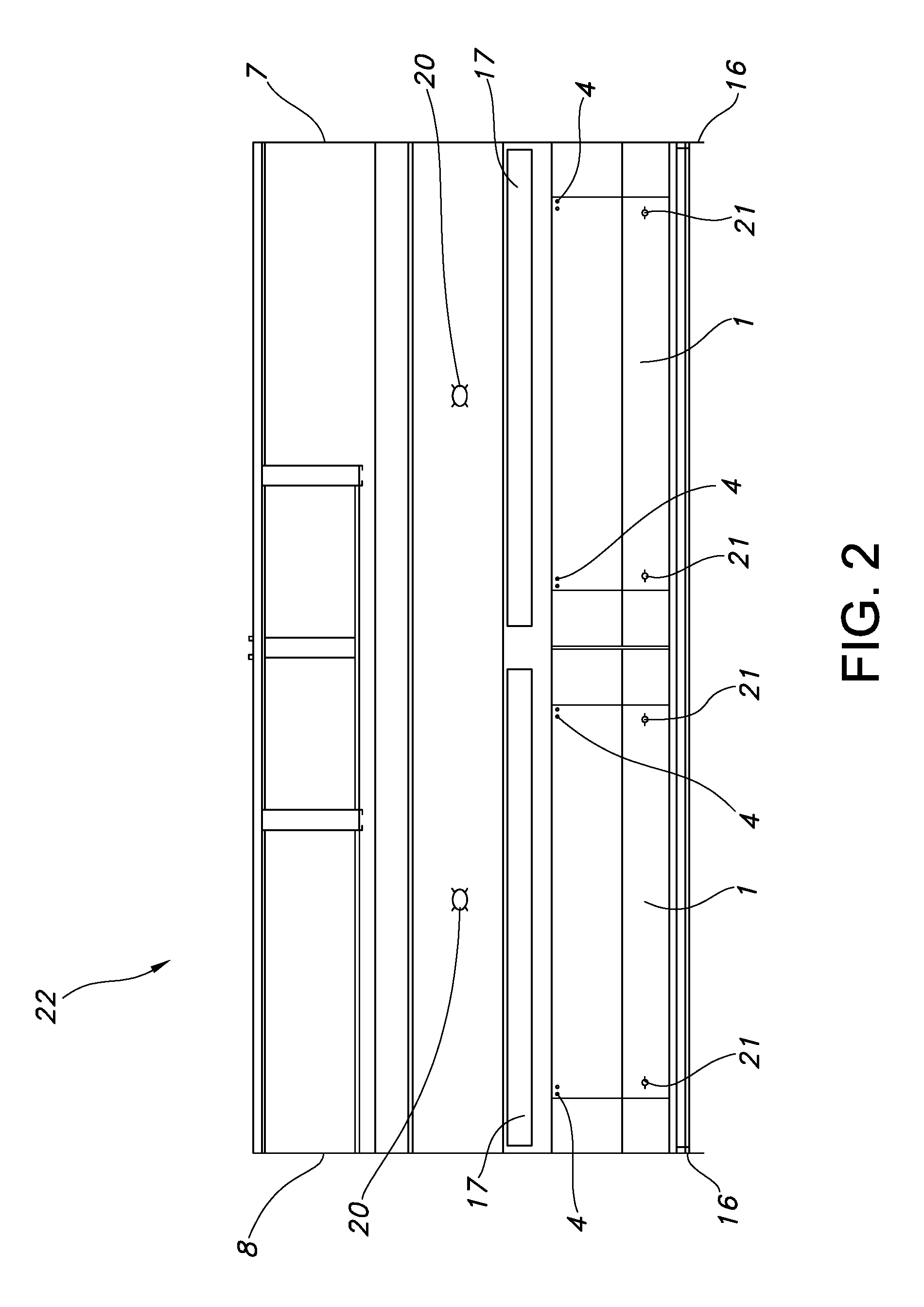Kitchen Ventilation Hood Apparatus
a technology for ventilation hoods and kitchens, which is applied in ventilation systems, heating types, and domestic stoves or ranges. it can solve the problems of harmful and potentially hazardous, irritating by-products of cooking, and affecting the health of consumers, so as to reduce the escape, reduce the escape, and the size and design are sufficien
- Summary
- Abstract
- Description
- Claims
- Application Information
AI Technical Summary
Benefits of technology
Problems solved by technology
Method used
Image
Examples
Embodiment Construction
[0013]In referring to the drawings, in particular the FIGS. 1, 2, 3, and 4 there is shown a kitchen ventilation hood 22 of this invention, which is designed to efficiently remove products of gas combustion and grease and / or steam vapors emanating from a cooking surface while minimizing air flow to keep clean conditioned air from being drawn from the kitchen. The kitchen ventilation hood 22 has a housing made of front shield 6, right side shield 7, and left side shield 8. The back interior surface of the kitchen ventilation hood 22 in the preferred embodiment is an arched interior hood surface 2. This arched interior surface design allows for a decreased air flow, while still removing the steam vapors and products of gas combustion from the area of the cooking surface (not shown). A front baffle 1 is provided and above the front baffle is the air intake gap 17, through which the air to be ventilated passes when exiting the kitchen ventilation hood 22. Air to be ventilated enters thro...
PUM
 Login to View More
Login to View More Abstract
Description
Claims
Application Information
 Login to View More
Login to View More - R&D
- Intellectual Property
- Life Sciences
- Materials
- Tech Scout
- Unparalleled Data Quality
- Higher Quality Content
- 60% Fewer Hallucinations
Browse by: Latest US Patents, China's latest patents, Technical Efficacy Thesaurus, Application Domain, Technology Topic, Popular Technical Reports.
© 2025 PatSnap. All rights reserved.Legal|Privacy policy|Modern Slavery Act Transparency Statement|Sitemap|About US| Contact US: help@patsnap.com



